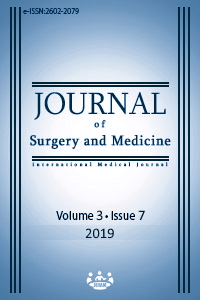A review of bacteriological profile of acute pyogenic meningitis in a tertiary care center in Southwest Nigeria
Keywords:
Acute pyogenic meningitis, Lower middle income countries, Antibiogram, Southwest NigeriaAbstract
Aim: Pyogenic meningitis remain a major cause of mortality and morbidity in lower middle income countries. There exists a wide variability in antibiogram profile of infective causes of acute pyogenic meningitis seeking for individualized management protocol. This study aim to review a five years profile of isolates from suspected cases and evaluate the antibiogram of the infective agent in a tertiary hospital in South west Nigeria.
Methods: All patients presenting to the hospital with signs and symptoms suggestive of meningitis were evaluated. Aside random plasma glucose, CSF samples were sent for biochemistry, gene expert for tuberculosis and cultured on Blood agar, Chocolate agar and MacConkey agar for neonates and read after 24hours incubation.
Results: 393 of the 657,890 patients seen in the hospital over a five year period suspected to have meningitis were investigated, 22(7%) had a positive culture. Streptococcus pneumoniae (31.8%), Haemophilus influenzae (27.4%), other Enterobacteriaceae (18.2%), Pseudomonas aeruginosa (9.1%), Staphylococcus aureus (4.5%), Proteus mirabilis (4.5%) and Candida albicans (4.5%) were isolated.
Conclusion: Spectrum of causative bacterial agent is not different from documented in other parts of the country. Streptococcus pneumoniae predominance was reported which is sensitive to Ampicillin, Ceftriaxone, Cefotaxime and Penicillin. Empirical treatment with Ceftriaxone or Cefotaxime can be instituted while awaiting laboratory confirmation in suspected cases.
Downloads
References
Allan RT, Diederik BW, Michael S. Acute Meningitis. Mandell, Douglas and Bennett’s Principles and Practice of Infectious Diseases. Churchill Livingston Elsevier. 2010;1189.
Micheal AA. Neisseria menigitidis. Mandell, Douglas and Bennett’s Principles and Practice of Infectious Diseases. Churchill Livingston Elsevier.2010; p. 2737-2752.
Terrie T. Emergency Plan of Action (EPoA) Nigeria: Meningitis. International Federation of Red Cross and Red Crescent Societies.2017. https:// www.adore.ifrc.org/Download.aspx?FileId=161742. Last Access date: 29 November 2018
Allan RT, Diederik BW, Michael S. Acute Meningitis. Mandell, Douglas and Bennett’s Principles and Practice of Infectious Diseases. Churchill Livingston Elsevier.2010; pg 1208
Ashraf ES, Salma MA, Mikhail NM. Diagnosis of Major Bacterial Causes of Culture Negative meningitis in Children. Egypt J Med Microbiol. 2014;23:47-57.
Syamal M, Amit KA. Phenotypic Characterization And Antibiogram Of CSF Isolates In Acute Bacterial Meningitis. J Clin Diagn Res. 2013;12:2704–8.
Mohammad ZA. Prevalence and rapid diagnosis of acute bacterial meningitis in children in Bangladesh.2018. https://www.omicsonline.org/proceedings/prevalence-and-rapid-diagnosis-of-acute-bacterial-meningitis-in-children-in-bangladesh-100459.html. Last acces date: 26 June 2019
Remmy A. Meningitis: List Of States Affected By Deadly Disease In Nigeria, 2017. https://www.nigerianbulletin.com/threads/meningitis-list-of-states-affected-by-deadly-disease-in-nigeria.236534. Last access date: 01 May 2019
FMOH. Nigeria: Meningitis Outbreak. 2017. https://reliefweb.int/disaster/ep-2017-000030-nga. Last access date: 26 June 2019
Lawal B. Federal Government of Nigeria and Partners Ramp up response to Meningitis C Outbreak.2017. https://reliefweb.int/report/nigeria/federal-government-nigeria-and-partners-ramp-response-meningitis-c-outbreak. Last access date 5 April 2019
Thomas V, Riaz A and Qasim S. Cerebro Spinal Fluid Analysis in Childhood Bacterial Meningitis. Oman Med J. 2008;23:32–33.
Kenneth CI and Abdullahi N. Profiles of acute bacterial meningitis isolates in children in National Hospital, Abuja. Niger Med J. 2015;56:297–300.
Alausa OK, Onile BA. The pattern of bacterial meningitis in Ibadan (A 21-month prospective study) Niger Med J. 1984;14:167–70
Akpede GO, Adeyemi O, Abba AA, Sykes RM. Pattern and antibiotic susceptibility of bacteria in pyogenic meningitis in a children's emergency room population in Maiduguri, Nigeria, 1988-1992. Acta Paediatr. 1994;83:719–23.
Fagbule D, Joiner KT. Pattern of childhood mortality at the University of Ilorin teaching hospital. Niger J Paediatr. 1987;4:1–5.
Ojinaka NC, Iloeje SO. Neurological complications of childhood bacterial meninigitis as seen in Enugu. Niger J Paediatr. 1998;25:53–6.
Akpede OI, Abiodun PO, Sykes M, Salami CE. Childhood bacterial meningitis beyond the neonatal period in southern Nigeria: changes in organisms/antibiotic susceptibility. East Afr Med J. 1994;71:14-20.
Johnson WB, Adedoyin OT, Abdulkarim AA, Olanrewaju WI.Bacterial pathogens and outcome determinants of childhood pyogenic meningitis in Ilorin, Nigeria. Afr J Med Med Sci. 2001;30:295-303.
Lagunju IA, Falade AG, Akinbami FO, Adegbola R, Bakare RA.Childhood bacterial meningitis in Ibadan, Nigeria--antibiotic sensitivity pattern of pathogens, prognostic indices and outcome. Afr J Med Med Sci. 2008;37:185-91.
World Health Organization. Epidemic and pandemic alert and response. Standardized treatment of bacterial meningitis in Africa in epidemic and non epidemic situations. 2007. www.who.int/csr/resources/publications. Last access date: 4 April 2019
Sanya E, Taiwo S, Azeez O, Oluyombo R. Bacteria Meningitis: Problems Of Empirical Treatment In A Teaching Hospital In The Tropics. J Infect Dis. 2006;6:1.
Ozumba UC. Acute bacterial meningitis in Enugu, Nigeria. 1 April 1989 to 31 March 1993. Cent Afr J Med. 1995;41:54-9.
Ogunlesi TA, Okeniyi JA, Oyelami OA. Pyogenic meningitis in Ilesa, Nigeria. Indian Pediatr. 2005;42:1019-23.
Downloads
- 1657 2169
Published
Issue
Section
How to Cite
License
Copyright (c) 2019 Adejoke Adijat Joseph, Michael Abel Alao, Tunde Oladipo, Samuel Sunday Taiwo, Gbenga Olutade Popoola, Oluyemi Adesoji Joseph
This work is licensed under a Creative Commons Attribution-NonCommercial-NoDerivatives 4.0 International License.
















